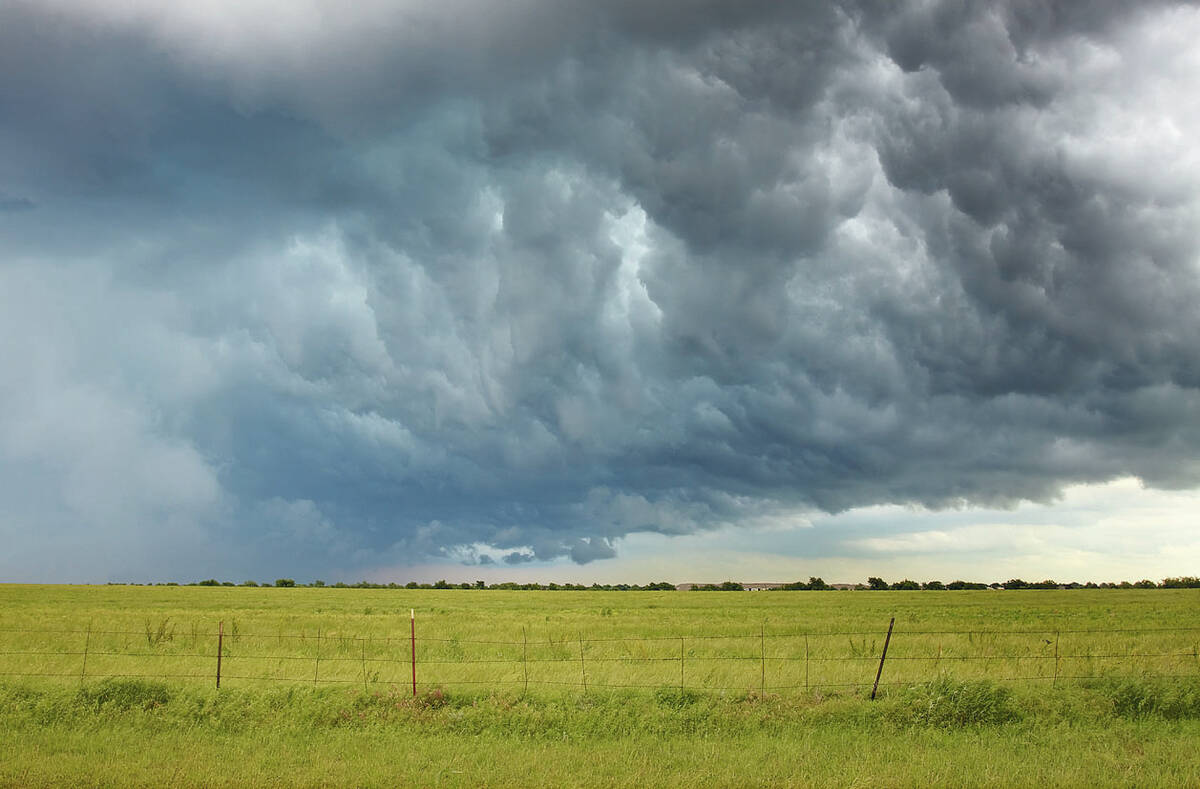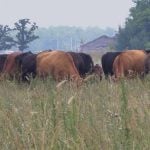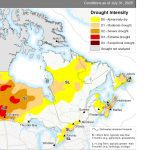It’s a good idea for kids to put their pennies into piggy banks.
And it seems it’s an even better idea for their parents to put their money into pig barns.
Brad Marceniuk, an economist with Saskatchewan Agriculture’s livestock development branch, has studied the returns from various types of investments during a 25-year period ending in 1997.
The most profitable place to put money, he found, was pigs.
Funds invested in Saskatchewan hog operations during that period generated an average annual return of 11.6 percent.
Read Also

Claims filed in Alberta hailstorm aftermath
The numbers are still coming in for the cost of the damage caused by a huge hail storm that hit various areas of Alberta Aug. 20.
That’s well ahead of farmland at 5.6 percent, Canadian equity markets at 5.1 percent, United States
equity markets at 7.1 percent, long-term bonds at 3.8 percent and 90-day government of Canada treasury bills at 2.7 percent.
All figures were adjusted to take into account the effects of taxes and inflation.
The hog industry also carries medium risk, similar to Canadian and U.S. stock exchanges.
The study was completed just before the hog industry collapsed in 1998 and 1999.
Marceniuk said that if those two years are thrown into the mix, the average annual return would be reduced by one or two percentage points to around 10 percent.
But even taking into account those two money-losing years, the message is clear.
“For individuals who live in Western Canada, it makes sense to consider hog investments as part of their investment portfolios,” he said.
“They should feel as comfortable investing in these local pork operations as in the companies listed on the Toronto Stock Exchange.”
Based on the study, investors interested in achieving medium return with medium risk should put about 30 percent of their money into hog operations, he said.
Marceniuk’s study, written as a masters’ thesis at the University of Saskatchewan, is based on returns from a 22-pig-per-sow operation. It also reflects pooled returns from 20 separate pig operations, which carries a significantly lower risk than investing in a specific barn.
Marceniuk said the study should help the provincial government as it tries to stimulate more growth in the province’s hog industry, which hasn’t grown as rapidly as government and industry planners had hoped.
“We are looking for ways to encourage investment,” he said.
“We need to explain to local communities and others that it is profitable to invest in these operations.”
The study might also encourage non-farm investors to put money in the hog industry.
One person who knows how challenging it can be to attract investment is Richard Wright, general manager of Quadra Group, a company that helps local communities plan and finance hog barns.
“I’ve raised $30 million, with 85 to 90 percent from farmers, and believe me, it’s a really tough thing to do.”
He said the disaster of 1998 and 1999 set the industry back.
“That really shook everybody up.”
He said the industry must provide shareholders with stability, good returns on their investment and liquidity if it is to attract urban investors.
For that to happen, it’s essential that hog operations integrate with companies farther down the food chain.
“I strongly believe that pork producers must be tied in with a food company in order to be successful,” Wright said.
“People want to invest in fully integrated systems.”
Liquidity has been seen as a major drawback to attracting outside investment.
Generally speaking, investors are wary of putting money into places where they can’t get it out, and investments in the hog industry have usually been structured so the money is tied up for two or three years or more.
“I think it would free up more money to come in if investors have the option to take it out,” Marceniuk said.
One lesson from the study is that farmers with a significant amount of money invested in farmland would be well advised to diversify their portfolio to include hogs, rather than buying more land and trying to make more money growing grain.
Familiarity is another advantage, especially with investors who live in or come from rural areas.
“It’s a lot easier to understand the mechanics of a hog operation than some of the high-tech companies in the U.S. or Toronto,” Marceniuk said.
Hog barn investors think first about their own financial positions, but some may benefit in other ways as well.
For example, local grain farmers may be able to sell their grain to the local hog operation, manure can reduce fertilizer costs, and a 2,500-sow barn creates approximately 40 jobs.
“So this gives them an opportunity to not only get a return, but also help their local economy.”
















